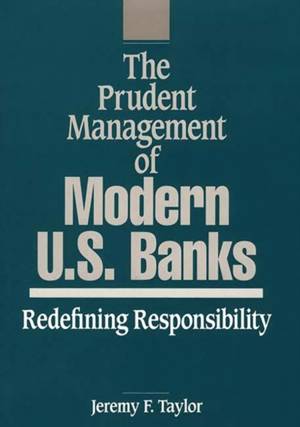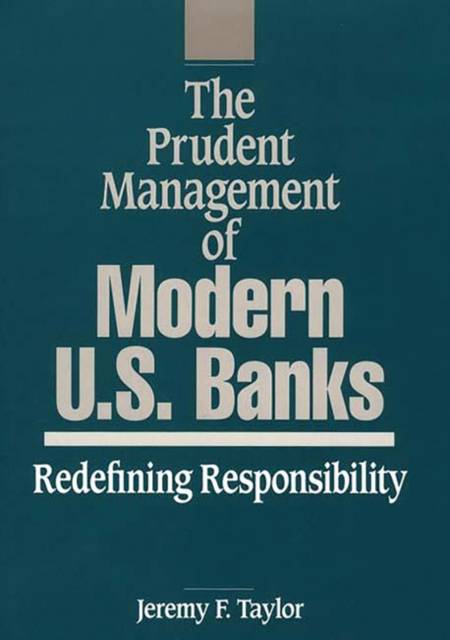
- Afhalen na 1 uur in een winkel met voorraad
- Gratis thuislevering in België vanaf € 30
- Ruim aanbod met 7 miljoen producten
- Afhalen na 1 uur in een winkel met voorraad
- Gratis thuislevering in België vanaf € 30
- Ruim aanbod met 7 miljoen producten
Zoeken
The Prudent Management of Modern U.S. Banks
Redefining Responsibility
Jeremy F Taylor, Marilyn Taylor
Hardcover | Engels
€ 161,45
+ 322 punten
Omschrijving
Without the internal application of standards of prudence in bank management, regulatory restraints will always be inadequate. A complete theory of prudence is developed in these pages, covering decision mechanisms and banking culture, using numerous specific examples of actual bank imprudence. The theory is applied across bank functions of credit, investments, funding, and management, creating practical principles accessible to bank managers, regulators, and all those dealing with banking issues in the public domain.
The shortcomings of the regulatory approach to bank supervision are discussed with particular attention given to recent acts of regulation. Historical bank examples, mostly recent, of bank imprudence are described. A strategy of decision-making, referred to as Recursive Managerialism (which is inherently prudential) is discussed in detail, and is prescribed as the preferred mode of decision in banking. The role of balance in the risks of banking in the pursuit of catastrophe avoidance is proposed as a negative form of prudence. This concept is shown to be associated with public interest issues, so serving similar goals to those presently sought through regulations. This structure provides the basis to evaluate decisions in specific areas of bank functions: credit, investments, funding, and management. In the course of the chapters in Part II, a positive version of prudence is advanced to complement the earlier negative version, and specific areas of modern banking issues--such as mergers and acquisitions--and the role of interstate banking, are given prudential treatment.Specificaties
Betrokkenen
- Auteur(s):
- Uitgeverij:
Inhoud
- Aantal bladzijden:
- 256
- Taal:
- Engels
Eigenschappen
- Productcode (EAN):
- 9780899308524
- Verschijningsdatum:
- 6/06/1994
- Uitvoering:
- Hardcover
- Formaat:
- Genaaid
- Afmetingen:
- 163 mm x 241 mm
- Gewicht:
- 598 g

Alleen bij Standaard Boekhandel
+ 322 punten op je klantenkaart van Standaard Boekhandel
Beoordelingen
We publiceren alleen reviews die voldoen aan de voorwaarden voor reviews. Bekijk onze voorwaarden voor reviews.











